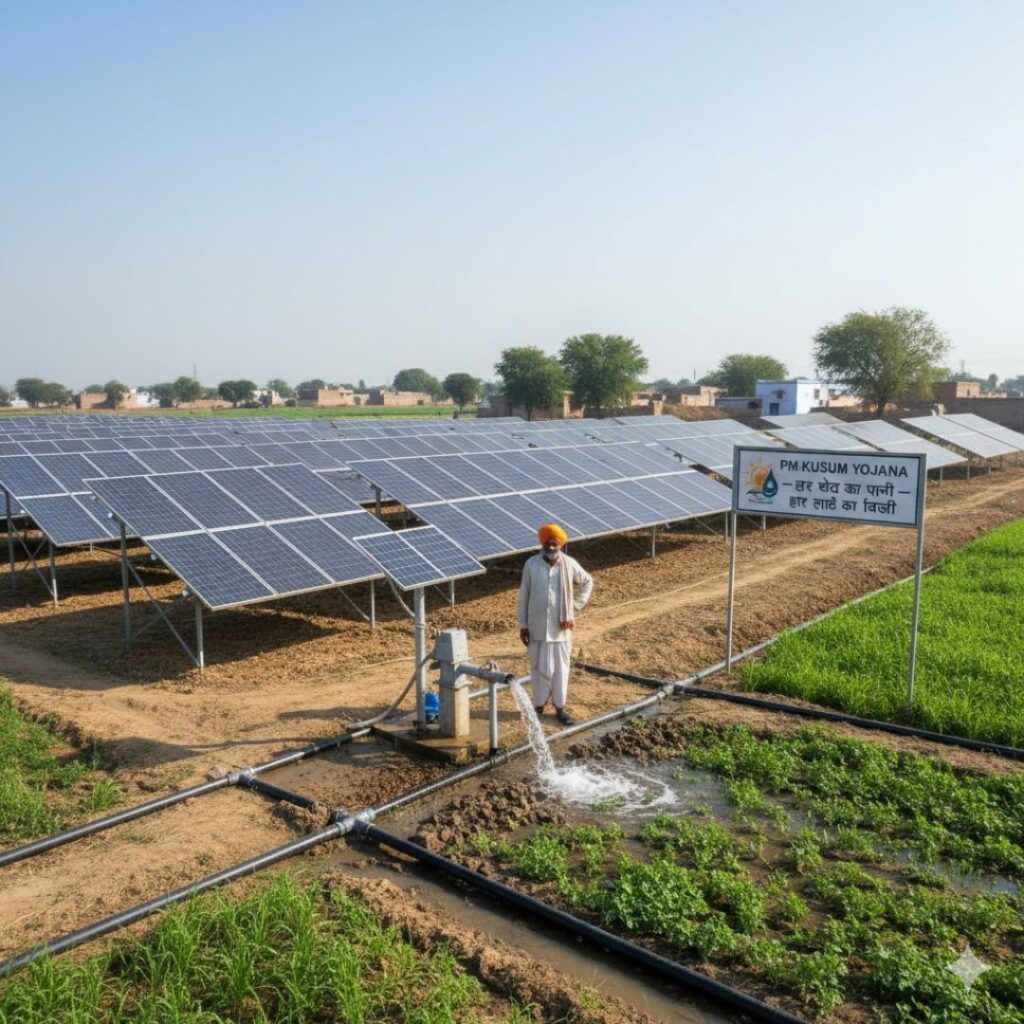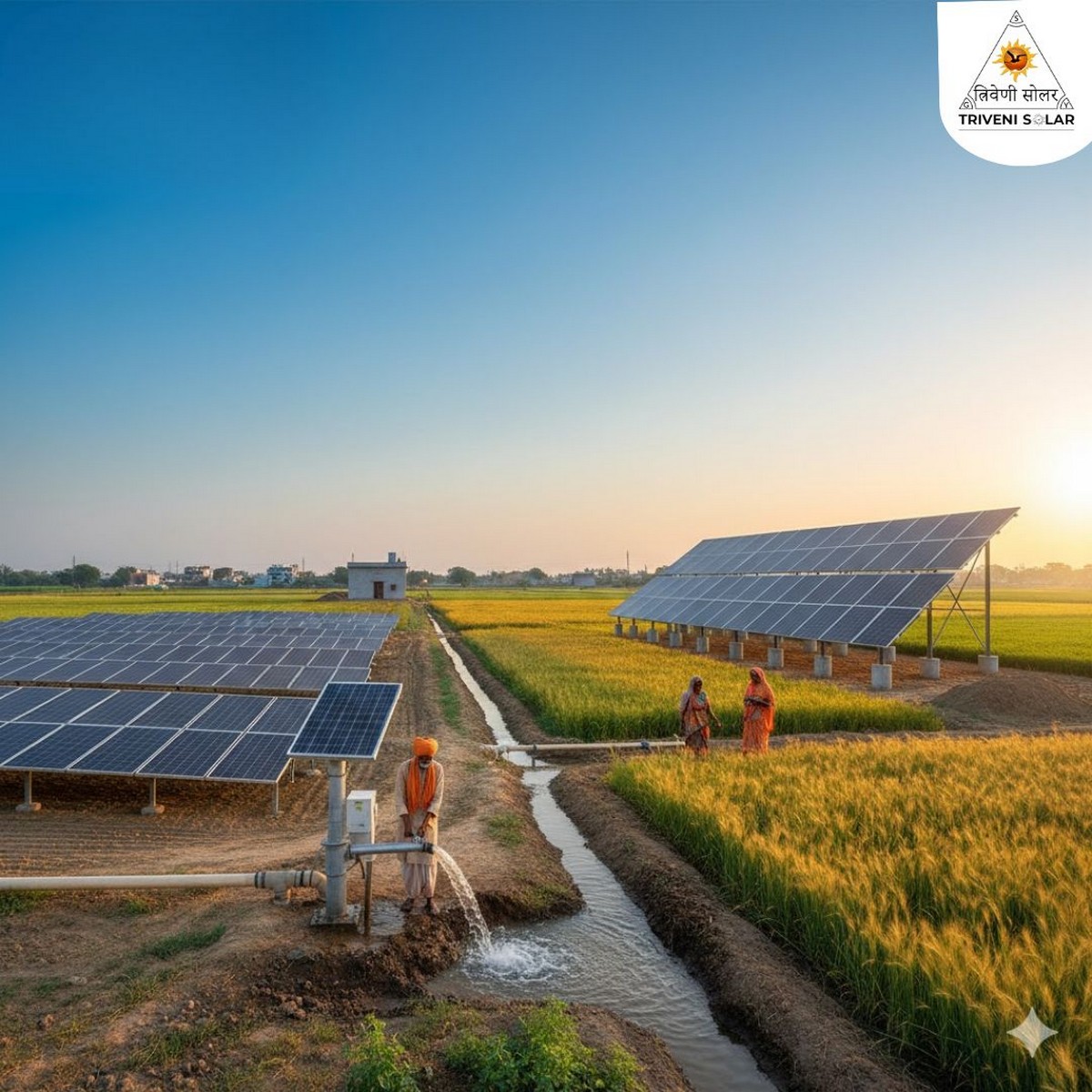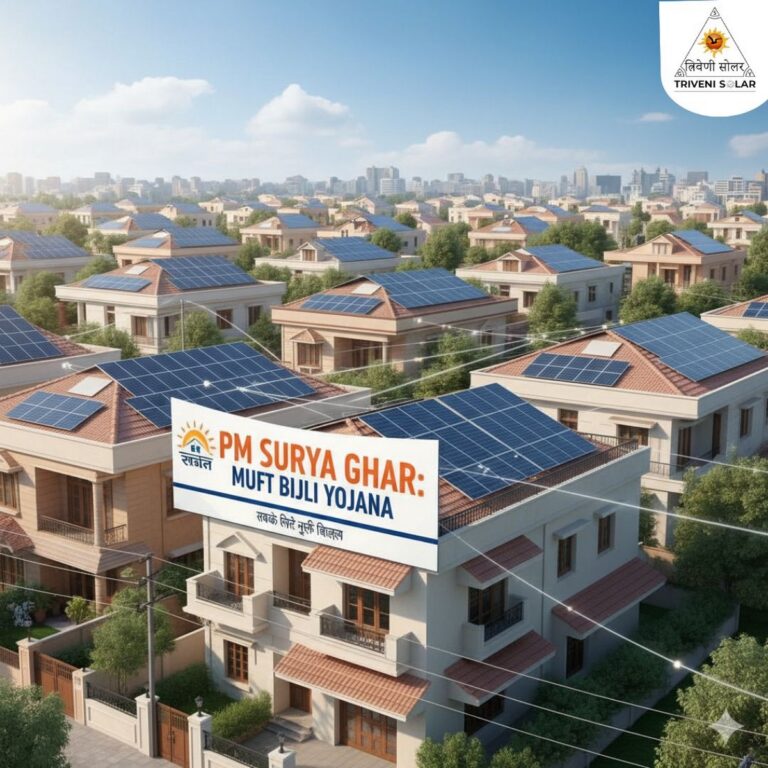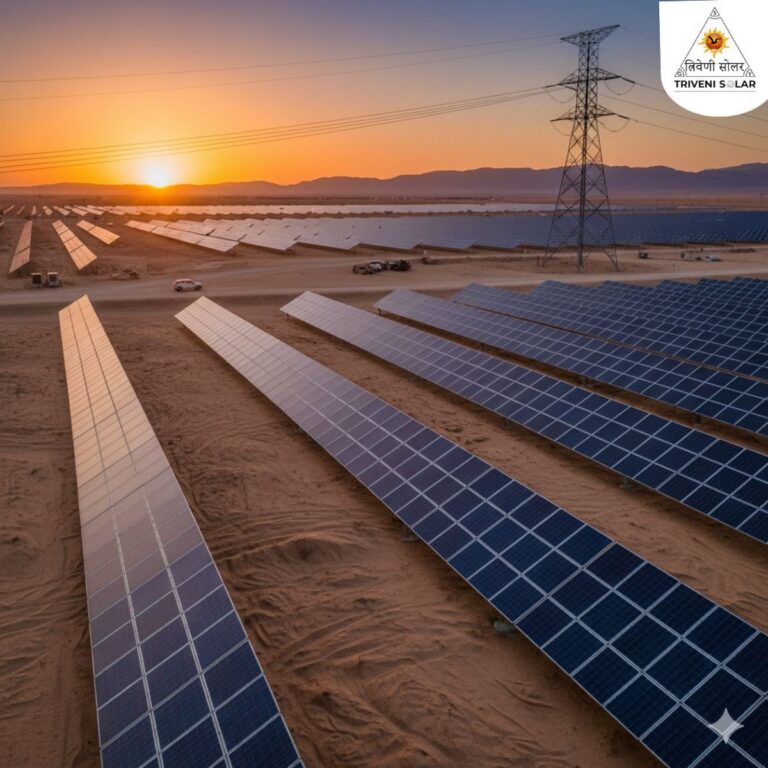📘 Table of Contents
- Introduction: India’s Solar Vision
- What Is the PM-KUSUM Scheme?
- Objectives of the PM-KUSUM Scheme
- Key Components of the PM-KUSUM Scheme
- Eligibility Criteria
- Financial Structure and Subsidy Pattern
- Implementation Mechanism
- Impact of PM-KUSUM Scheme on Farmers and the Solar Sector
- Challenges and Bottlenecks
- Latest Updates and Reforms in 2025
- How to Apply for the PM-KUSUM Scheme
- Why PM-Surya-Ghar.com Is Your Trusted Partner in Solar Implementation
- Conclusion: Towards a Greener, Energy-Independent India
🌍 Introduction: India’s Solar Vision
PM-KUSUM Scheme India has set an ambitious goal to achieve 500 GW of renewable energy capacity by 2030, out of which 280 GW is expected from solar power. To accelerate this transition and empower rural India, the Government of India launched the Pradhan Mantri Kisan Urja Suraksha Evam Utthaan Mahabhiyan (PM-KUSUM) scheme.
This initiative not only promotes decentralized solar energy generation but also ensures energy security, income stability, and sustainability for millions of farmers.
☀️ What Is the PM-KUSUM Scheme?
The PM-KUSUM Scheme, launched in 2019 by the Ministry of New and Renewable Energy (MNRE), aims to install solar pumps and grid-connected renewable energy plants and promote solarization of agricultural feeders.
The scheme’s primary vision is to:
- Empower farmers with independent solar energy systems
- Reduce dependency on diesel and grid electricity
- Encourage distributed solar generation at the rural level
🎯 Objectives of the PM-KUSUM Scheme
- Enhance farmers’ income through sale of surplus solar power to the grid
- Promote clean energy and reduce carbon emissions
- Reduce the burden of agricultural electricity subsidies on state governments
- Create rural employment through solar infrastructure projects
- Support India’s Net-Zero 2050 target

⚙️ Key Components of the PM-KUSUM Scheme
The PM-KUSUM Scheme operates under three major components, as shown below 👇
| Component | Description | Target |
|---|---|---|
| Component A | Setting up of 10 GW decentralized grid-connected renewable energy plants (up to 2 MW each) on barren/fallow lands | 10 GW |
| Component B | Installation of 17.5 lakh standalone solar pumps to replace diesel pumps | 1.75 million pumps |
| Component C | Solarization of 10 lakh existing grid-connected pumps | 1 million pumps |
🧾 PM-KUSUM Scheme Eligibility Criteria
The scheme targets:
- Individual farmers, groups of farmers, panchayats, and co-operatives
- DISCOMs, renewable energy developers, and solar EPC companies
- Farmers with barren or cultivable land available for solar installations
💰 Financial Structure and Subsidy Pattern
The PM-KUSUM scheme follows a subsidy-based financial model:
| Funding Source | Percentage Contribution |
|---|---|
| Central Government Subsidy (MNRE) | 30–60% (varies by component) |
| State Government Subsidy | 30% |
| Farmer Contribution / Bank Loan | 10–40% |
For solar pump installations:
- Farmers receive up to a 60% subsidy (combined Central + State).
- The remaining 40% is covered through bank finance and farmer contribution.
- Farmers can earn additional income by selling surplus power under Component A.
🏗️ Implementation Mechanism
Implementation of PM-KUSUM is coordinated by:
- MNRE (policy + funding)
- State Nodal Agencies (SNAs) for ground-level execution
- DISCOMs for grid connectivity and power purchase
Each project follows an Expression of Interest (EOI) and bidding process, ensuring transparency and efficiency.
🌾 Impact of PM-KUSUM Scheme on Farmers and the Solar Sector
For Farmers:
- Energy independence through off-grid solar systems
- Increased income from power sale
- Reduced input cost by eliminating diesel expenses
- Sustainable irrigation even in remote locations
For the Solar Industry:
- Boost to domestic solar manufacturing and EPC services
- Expansion of rural solar micro-grids
- Enhanced demand for solar modules, inverters, and pumps
For the Environment:
- Reduction of carbon emissions by more than 30 million tonnes annually
- Improved groundwater management through solar irrigation efficiency

⚠️ Challenges and Bottlenecks
Despite success, PM-KUSUM faces a few operational challenges:
- Land acquisition delays for large solar plants
- Bank loan disbursement and credit access issues for farmers
- Technical maintenance gaps in rural areas
- Coordination challenges between multiple implementing agencies
🔄 Latest Updates and Reforms in 2025
As of 2025, MNRE has introduced several reforms:
- Digital portal integration for real-time tracking
- Inclusion of solar-battery hybrid systems
- Increased subsidy support for small & marginal farmers
- Revised target: 37 GW solar capacity under PM-KUSUM by 2030
- Faster DISCOM approval mechanisms
These changes make the program more transparent, inclusive, and result-oriented.
📝 How to Apply for the PM-KUSUM Scheme
Follow these steps to apply under PM-KUSUM:
- Visit the official MNRE portal or the respective State Nodal Agency website.
- Register using Aadhaar and land details.
- Choose your component (A, B, or C) based on eligibility.
- Submit documents—land ownership proof, ID, bank details, and application form.
- On approval, a subsidy sanction letter is issued.
- Installation is completed by an empanelled solar EPC vendor.
👉 You can also visit pm-surya-ghar.com for expert assistance, documentation support, and EPC consultation.
🏢 Why PM – Surya-Ghar.com Is Your Trusted Partner in Solar Implementation
At PM-Surya-Ghar.com, we specialize in end-to-end solar project execution under government schemes such as PM-KUSUM.
Our Services:
- Assistance in application filing and eligibility assessment
- Supply of MNRE-approved solar modules and inverters
- Turnkey EPC & commissioning services
- After-sales maintenance and remote monitoring
We ensure your project is compliant, efficient, and profitable under the PM-KUSUM framework.
🌅 Conclusion: Towards a Greener, Energy -Independent India
The PM-KUSUM Scheme marks a significant leap in India’s transition to a sustainable and self-reliant energy ecosystem. By merging clean technology with rural empowerment, it supports both economic growth and climate goals.
As India continues to electrify its agricultural sector with solar power, initiatives like PM-KUSUM pave the way for a cleaner, greener, and more resilient future.
🌞 Join the solar revolution with PM-Surya-Ghar.com—your trusted partner in building a solar-powered India.



